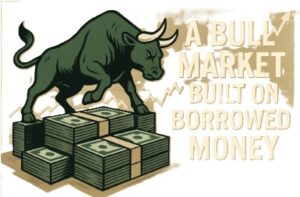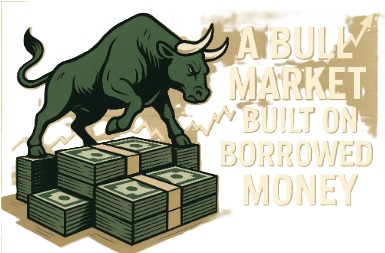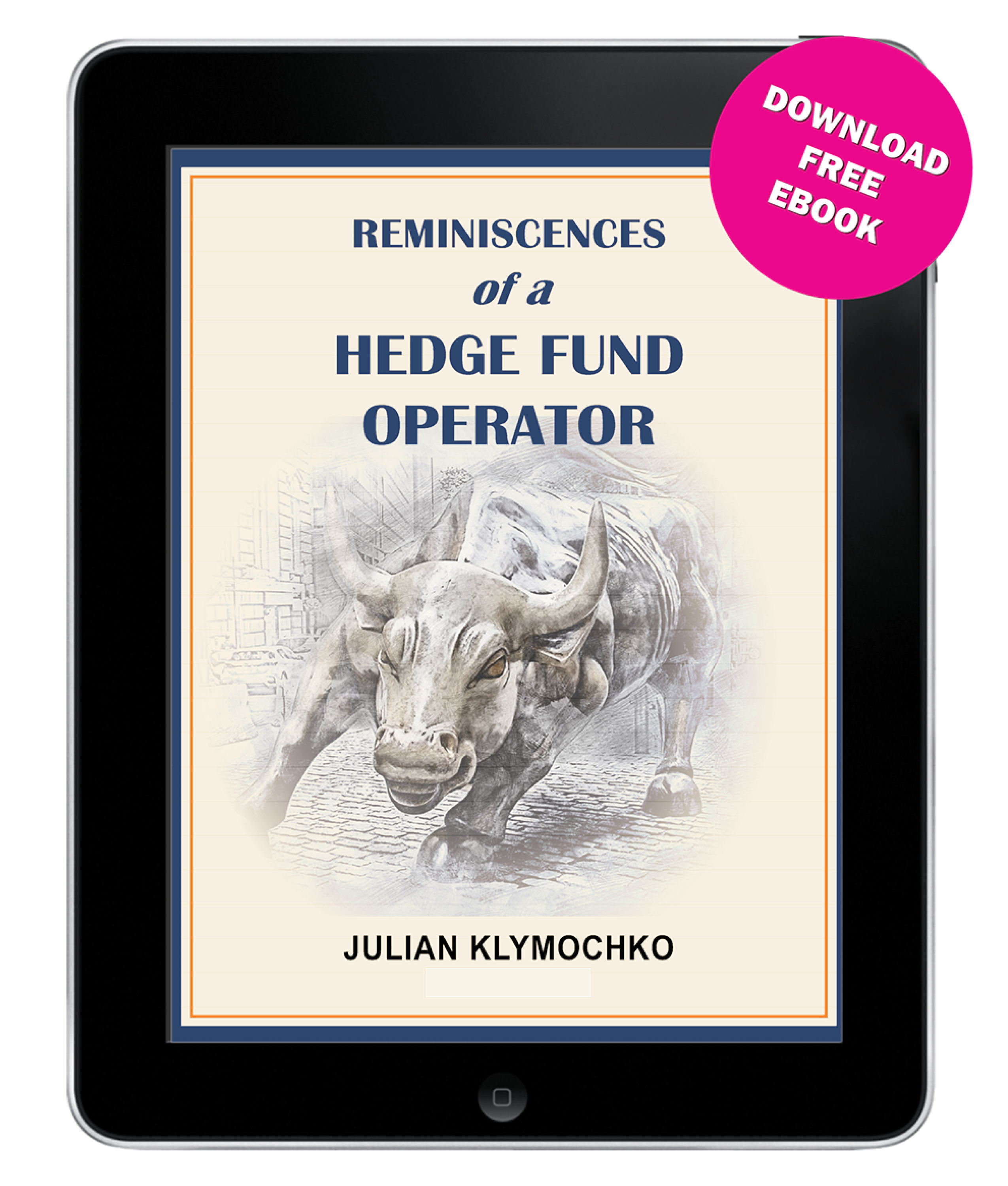
October 20, 2025 – In the late 19th and early 20th centuries, fraudulent and highly speculative brokerage operations called bucket shops flourished. These bucket shops enabled customers to make highly leveraged bets on stock or commodity price movements.
While bucket shops appeared as legitimate brokerage firms, with ticker tapes, quote boards, and bustling clerks, their operations were anything but legal. They would “bucket” orders, recording them internally without actually sending customer funds to the exchange to purchase the underlying security. The firm acted as the counterparty and would pay out successful bets, pocketing the cash when the bets soured (as most of them did). To tip the scales in their favour, securities prices were often delayed or manipulated such that the customer would nearly always lose.
In effect, bucket shops enabled leveraged gambling (as much as 10x levered) on short-term moves in securities prices, preying on novice investors who ended up losing more than 90% of the time.
It was pure zero-sum gambling, with the shop as the casino.
While bucket shops were killed by regulation, including the formation of the Securities and Exchange Commission (SEC) in 1934, their spirit lives on today.
In the cryptocurrency market, the spirit of bucket shops lives in perpetual futures (perps). Perps allow crypto traders to make highly leveraged bets (as much as 100x levered) on the short-term movements of crypto prices without owning the underlying asset. A perp is a synthetic bet on the price of a cryptocurrency, just as a bucket shop bet was on a stock’s price. However, one significant difference is that perpetual futures may match traders’ orders with those of others in the market, rather than acting as the house on all bets.
In a free country, speculators should have the right to bet and lose their money. While independent zero-sum gambling among speculators can be harmless, the inherent extreme leverage can create a vicious cycle of forced liquidations that can greatly amplify market crashes, affecting all investors. For example, on October 10th, after President Trump announced a 100% tariff on Chinese goods, the crypto market crashed, wiping $2.5 trillion from its aggregate market capitalization, amplified by margin calls and liquidations stemming from the highly leveraged perpetual futures market. In previous crypto market crashes, overleveraged longs have often worsened the contagion via auto-deleveraging and forced selling.
There is one segment of the stock market that shares some characteristics with the bucket shops of the past: Leveraged exchange traded funds (ETFs).
While leveraged ETFs are legitimate, regulated securities that track underlying assets, a common characteristic some of these instruments share with bucket shops is their extensive use of leverage.
Leveraged ETFs can amplify market crashes through forced selling and procyclical rebalancing, similar to how crypto perps trigger liquidation cascades. In a market crash, forced selling by leveraged funds amplifies the carnage. In addition, highly leveraged products are typically utilized by day-traders, who often sell the products as they decline, causing a negative feedback loop in which large-scale redemptions deepen the sell-off.
Leveraged ETFs have experienced a rise in popularity recently, with the number of leveraged ETFs soaring over the past year.

Moreover, leveraged ETFs have more commonly taken increasingly concentrated bets. One of the more popular products these days is the single-stock leveraged ETF, which allows speculators to make a highly-leveraged bet on a single security. Sound familiar?
Single stock ETFs with 5x leverage have recently been proposed in the U.S. market. With 5x leverage, a stock’s decline of 20% could have a devastating effect, wiping out most if not all of the value of a 5x leveraged ETF. For some context, over the past decade, more than 90% of stocks in the S&P 500 have experienced at least one 20% drawdown. In a bear market, many 5x ETFs would experience devastating losses, wiping out investors.
While I welcome all innovation in the capital markets, and these products are certainly innovative, and hold the view that speculators should be able to trade as they desire, long-term investors should take note of the increasing leverage in the system, which only enhances risk and amplifies volatility.
As leveraged ETFs proliferate in the capital markets, and increasingly compete for more embedded leverage (how long until 10x?), their market influence and ability to cause a calamity only increase. In a stock market crash, leveraged ETFs must sell underlying futures, swaps, or index components, to bring their leverage back in line, as part of their daily reset mechanism designed to maintain their leveraged exposure. This dynamic adds fuel to the fire as the market falls.
Leveraged products, similar to the bucket shops of the last century and crypto perps on offshore exchanges, often act as momentum accelerants, amplifying volatility while exaggerating market moves. They have the ability to turn ordinary market drawdowns into negative feedback loops of forced selling, worsening the damage felt by long-term investors.
While leveraged ETFs are still a relatively minor component of the capital markets, they are growing rapidly. As such, investors should be mindful of the proliferation of leveraged products and the increasing risk that they pose to the underlying volatility of securities and broad market indexes.
Due to this lurking and rising risk, investors may benefit from taking a hedged approach in their equity allocation in order to enhance downside protection. To help facilitate idea generation, we highlight one top-decile stock that is forecast to outperform and one bottom-decile stock that is predicted to underperform in this month’s AlphaRank Top Stocks.
OUTPERFORM: Pan American Silver Corp (TSX, NYSE: PAAS) is a Canadian-based precious-metals miner with a strong focus on silver, plus gold and other by-product metals (zinc, lead, copper) across the Americas. In a precious metals bull market, silver producers can have more upside leverage. PAAS provides a combination of value and quality, trading at an EBITDA multiple of 13x with an attractive return on capital of 22.8%. With increasing consensus earnings estimate revisions and positive stock price momentum, along with an AlphaRank score of 99.7/100, we expect PAAS shares to continue to outperform. Disclosure: Long PAAS shares in the Accelerate Canadian Long Short Equity Fund (TSX: ATSX).
UNDERPERFORM: West Fraser Timber Co Ltd (TSX: WFG) is a large Canadian integrated wood-products company. It produces and sells lumber, engineered wood products, serving the residential construction, repair/remodel, and industrial wood building markets. WFG has struggled through the trade war and a weak residential housing market, as evidenced by a return on capital that fell below its cost of capital. With an AlphaRank score of 4.2/100, we expect the shares to continue to underperform. Disclosure: Short WFG shares in the Accelerate Absolute Return Fund (TSX:HDGE).
The AlphaRank Top and Bottom stock portfolios exhibited mixed relative performance last month:
- In Canada, the top-ranked AlphaRank portfolio of stocks returned 11.0%, outperforming the benchmark’s 4.7% return, while the bottom-ranked portfolio of Canadian equities gained 11.2%. The long-short portfolio (top minus bottom ranked stocks) decreased by -0.2%, as the bottom-ranked stocks slightly outperformed the top-ranked securities. Over the past five years, the top decile AlphaRank portfolio has gained more than 200%, while the bottom-ranked portfolio has risen less than 100%.
- In the U.S., the top-decile-ranked equities returned 2.9%, underperforming the S&P 500’s 3.7% return. Meanwhile, the bottom-ranked stocks gained 3.7%, resulting in a -0.8% return for the top decile minus the bottom decile long-short portfolio. Over the past five years, the top-ranked U.S. equities have gained more than 150%, while the bottom-ranked portfolio has declined by more than -30%.
AlphaRank Top Stocks represents Accelerate’s predictive equity ranking powered by proven drivers of return. Stocks with the highest AlphaRank are expected to outperform, while stocks with the lowest AlphaRank are anticipated to underperform. AlphaRank assigns a numeric value to each security, ranging from 0 (bottom-ranked) to 100 (top-ranked), based on selected predictive factors. All Canadian and U.S. stocks priced above $1.50 per share and with a market capitalization exceeding $100 million are evaluated. In both the Accelerate Absolute Return Fund (TSX: HDGE) and the Accelerate Canadian Long Short Equity Fund (TSX: ATSX), Accelerate funds may be long many top-ranked stocks and short many bottom-ranked stocks. See AccelerateShares.com for more information.





